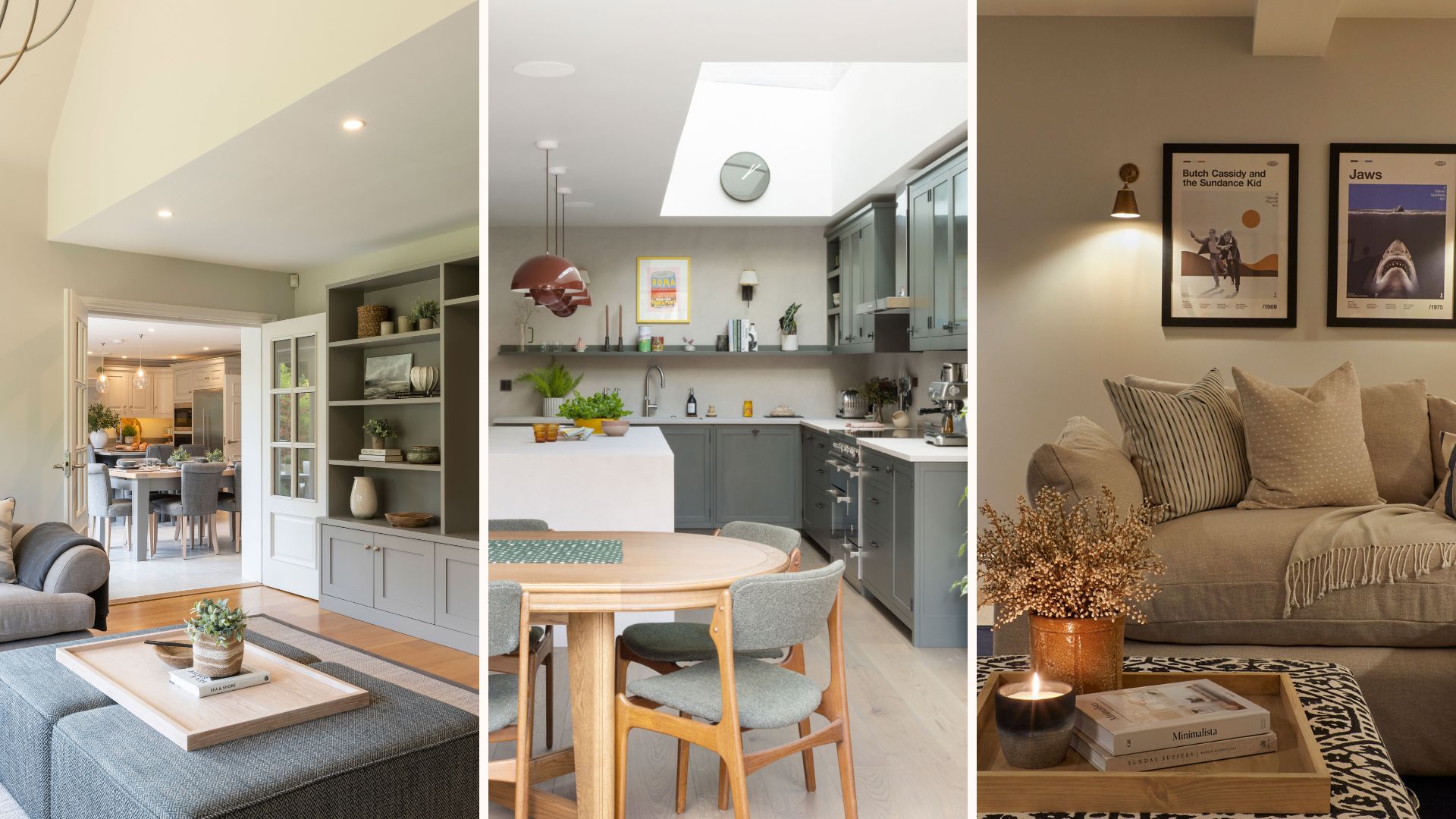
Looking for ideas on how to make a dark room brighter? You are most definitely not alone. Spaces with plenty of natural light are a pleasure to spend time in and contribute to a sense of well-being, while dark, gloomy and badly lit rooms are the opposite.
There are lots of reasons why a room might not get much daylight. From converted basements and lofts to newly formed rooms within remodelling projects that have been created by stealing space from two existing rooms. Then there are those awkward 'middle' rooms in terraced and semi-detached houses and windowless downstairs toilets and let's not forget older homes with small windows or those shaded by tall trees – all suffer from the problem.
Whatever the reason here, with the help of the experts, we explain the best ways to bring light into a dark room, as well as a few tips on how to cheat the natural light. Whether you are after interior ideas for small bedrooms lacking light or have a downstairs loo in need of brightening up we have a solution for you.
How to make a dark room brighter
It just isn't always possible for every room of the house to have a window or to be flooded with natural light. Central rooms or those formed by stealing space from other rooms often end up with no windows at all, while north-facing rooms can feel eternally gloomy in the winter months.
In these cases, a different approach is needed to pull in light and it is useful to bear in mind common lighting mistakes too. Here, we explain the genius ways of lighting any dark room to feel brighter.
1. Choose brightening shades
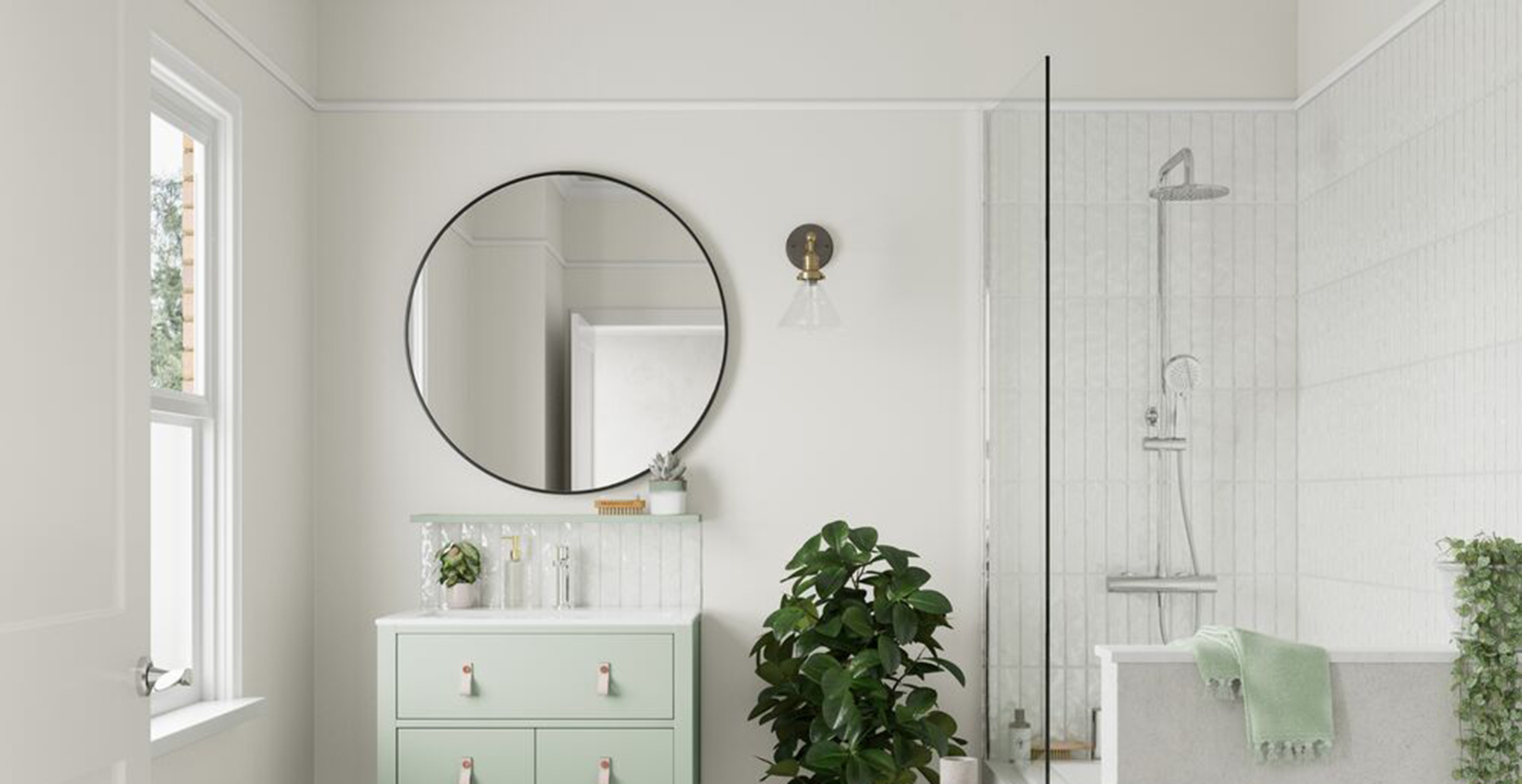
An easy place to start when looking to make any dark room brighter is choosing a flattering colour palette, for instance, the best white paint colours. Consider not only the colours but the reflective qualities also.
Marianne Shillingford, Creative Director & Colour Expert, shares her thoughts on what colours are best to make a dark room feel brighter. “The key to painting a darker, smaller room is to enhance as much of the room’s natural light as possible, and one easy way to do this is with light-reflecting paint colours."
"Use bright, crisp colours like (Dulux) Fine Cream, Wild Primrose or Pure Brilliant White to trick the eye into thinking the area is brighter and airier than it actually is. Even better, these brighter colours will also help to reflect the natural light that filters in throughout the day and enhance the artificial light during the evening too.”
2. Use internal glazing
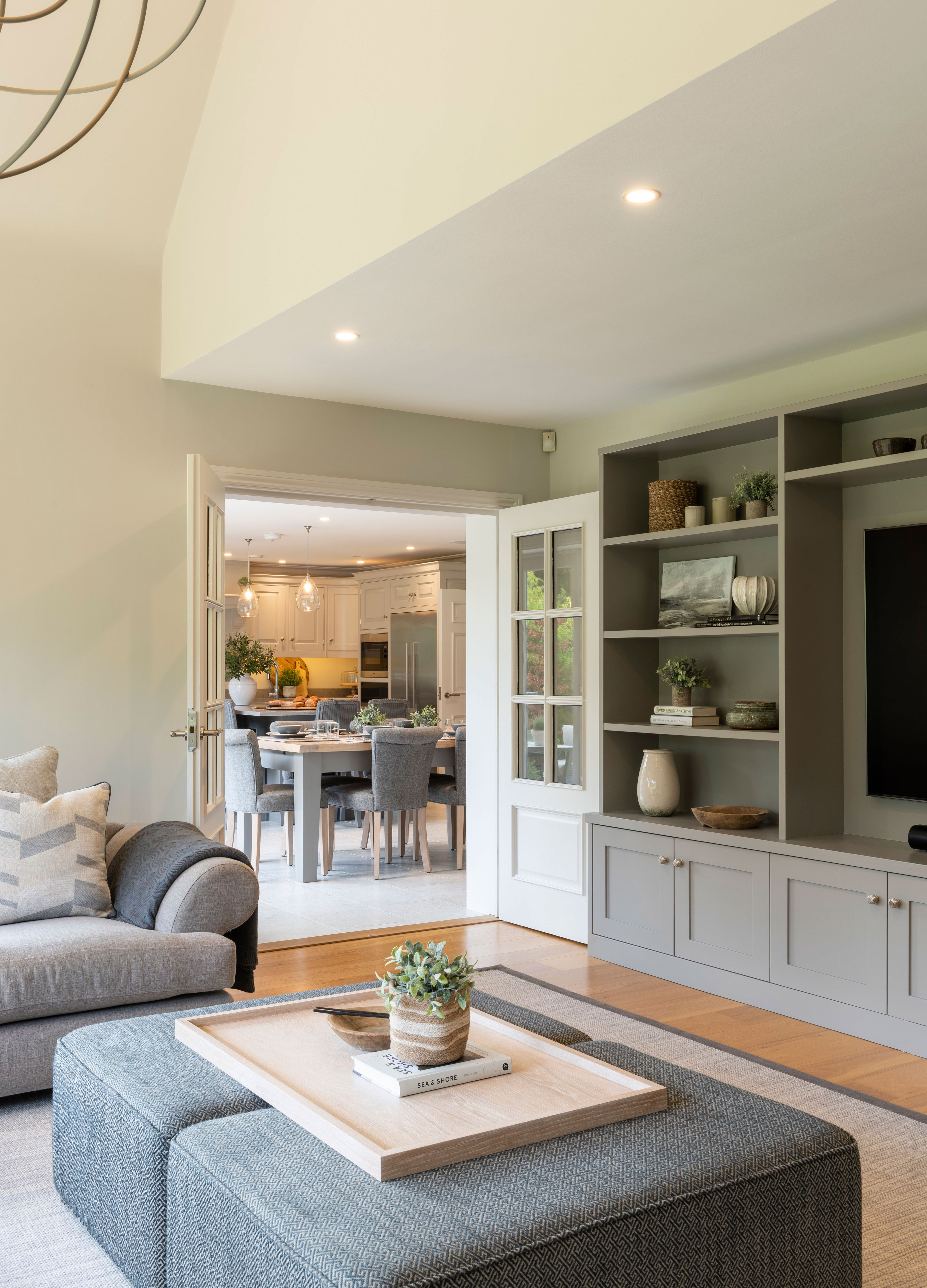
Installing some form of internal glazing is a great way to bring light into a dark room or one without any windows at all. This could mean fitting some glazed doors, an internal window or two, or even some fixed glass panels or glass bricks.
“You can brighten up your room by adding glazed internal doors," says Allan Reid, glass expert at Art Windows & Doors. "Start by replacing a solid interior door with a glazed one, you can allow natural light from adjacent rooms to filter through.”
If you are worried about privacy, transparent glass will protect your modesty, as well as blinds. Some glass doors can be fitted with internal blinds for a sleeker look while both Roman and roller blinds are also options. Alternatively, a decorative window film will allow light through, add a pretty touch and keep out prying eyes.
If you love this idea, make sure you know how to clean windows without streaks to keep your internal glazing sparkling and clear.
3. Be smart with mirror placement
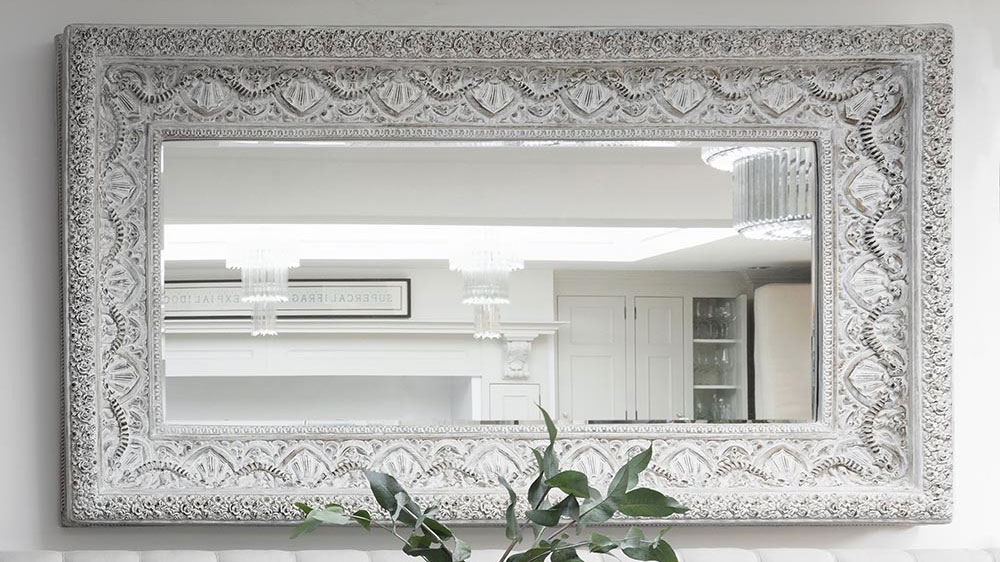
No dark room should be without a good few mirrors. Not only can they make a small room feel bigger, but they will also help a dark room feel lighter.
"A final trick to help illuminate a room with no natural light is to use mirrors," says Marlena Kamenska. "Mirrors placed strategically near lighting sources will help increase the level of light in any space, making it appear much brighter than it may actually be."
"The placement of mirrors can help to reflect and amplify available light, making the room appear larger and brighter,” confirms Allan Reid.
If you are going to incorporate lots of mirrors in your home make sure you know how to clean a mirror properly to keep them gleaming.
4. Borrow light from another room
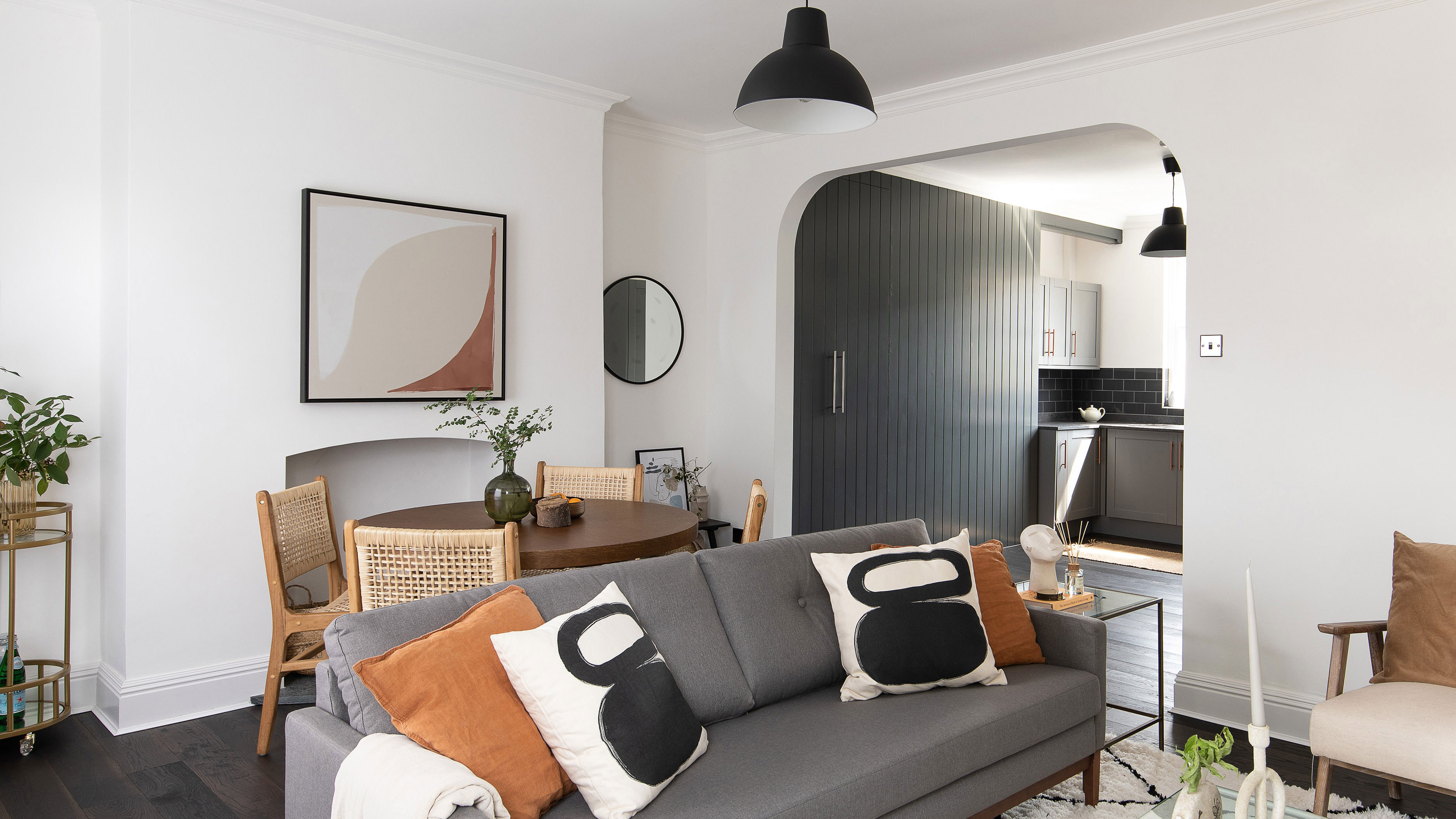
There are lots of other ways that you can share light between rooms too but one of the best is to look at the current layout of your home and consider whether removing an internal wall could help with the flow of light.
Often, even removing just part of a wall, perhaps to create an arch or half-section, can be enough to bring light into an otherwise dark space. If the wall in question is non-loadbearing you might even be able to take it out on a DIY basis, although it is always best to check first with a structural engineer.
While completely open-plan layouts were recently cited as one of the outdated interior design trends of 2024, in the case of homes on the darker side, going a little more open-plan can help.
5. Pay attention to the tone of your lighting
The colour or tone of artificial lighting is really important in a dark space. “More warm-toned lighting creates a relaxed, cosy environment, whilst cool-toned bulbs work well in spaces with practical uses such as the kitchen, or the office," advises Marlena Kamenska, designer at ValueLights.
“When it comes to lighting a room with no windows, it’s important to try and replicate the missing natural light. You can do this by introducing various sources of artificial light, aiming to achieve a balanced level of illumination throughout the space.
"Choosing light bulbs with a daylight colour temperature can mimic the effect of natural sunlight, ensuring the room feels inviting despite the lack of windows," adds interior designer Claire Garner, director of Claire Garner Interiors.
Sunplux B22 Bayonet Cap Light Bulbs from Amazon deliver equivalent daylight of 6500K.
6. Take a layered approach to your lighting scheme
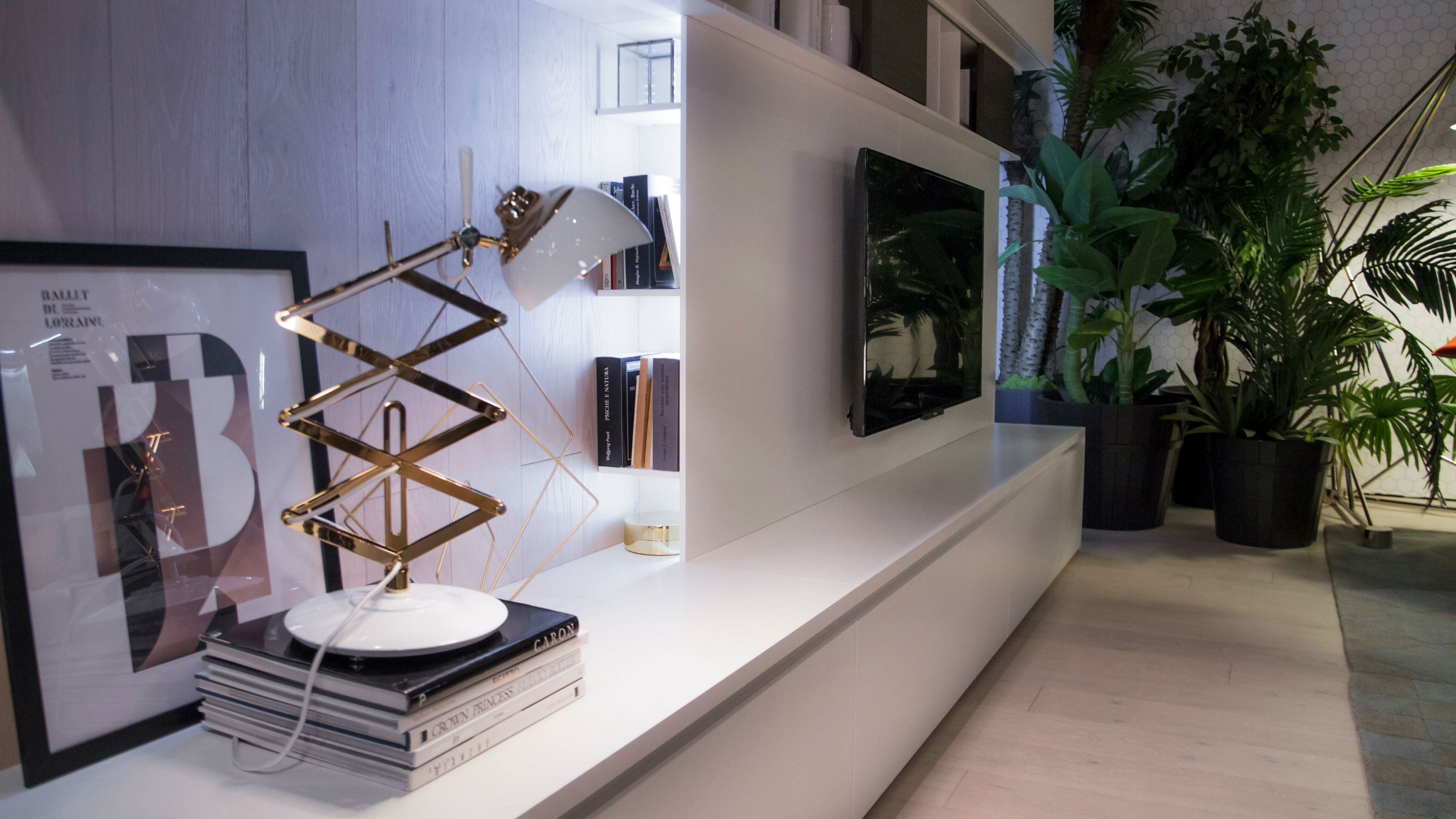
Using 'layers' of lights from lots of different sources is always a good approach to take, but in a room that suffers from a lack of natural light, an even more carefully considered approach is needed.
“Lighting has the ability to completely change the atmosphere of a room – what was once a dark, dingy space can soon become cosy and inviting," says Marlena Kamenska. "No matter what the functionality of the room, you want to ensure you add layers of light to hit various touchpoints, highlighting all the key features and brightening up any dark corners.
“One of the most important lights to consider is the ceiling light – the main overhead lighting which can transform your space and fully brighten the room," continues Marlena. "Downlights are a great option for a dark room or one without windows as they allow for the light to be distributed equally throughout the space, without overwhelming specific points in the room with brightness.
“Think about the various uses of the room and the type of lighting needed for those activities. If it’s a home office space, for example, you’ll require lighting that will help you focus and encourage productivity. This would typically be natural lighting, so you want to try and replicate this with lamps. You could invest in a SAD lamp which is specifically designed to imitate sunlight – this is also useful for any wellness activities such as meditation and yoga."
"Layered lighting combines ambient, task, and accent lighting," further explains Claire Garner. "Overhead fixtures, such as recessed lighting, or a stylish chandelier, provide general illumination, while floor lamps or wall sconces can add warmth and reduce shadows. Don’t shy away from using larger fixtures, as they can create the illusion of a more expansive space and add a touch of sophistication. Integrated LED strip lights within joinery or backlit panels can also simulate natural light, creating a soft, even glow."
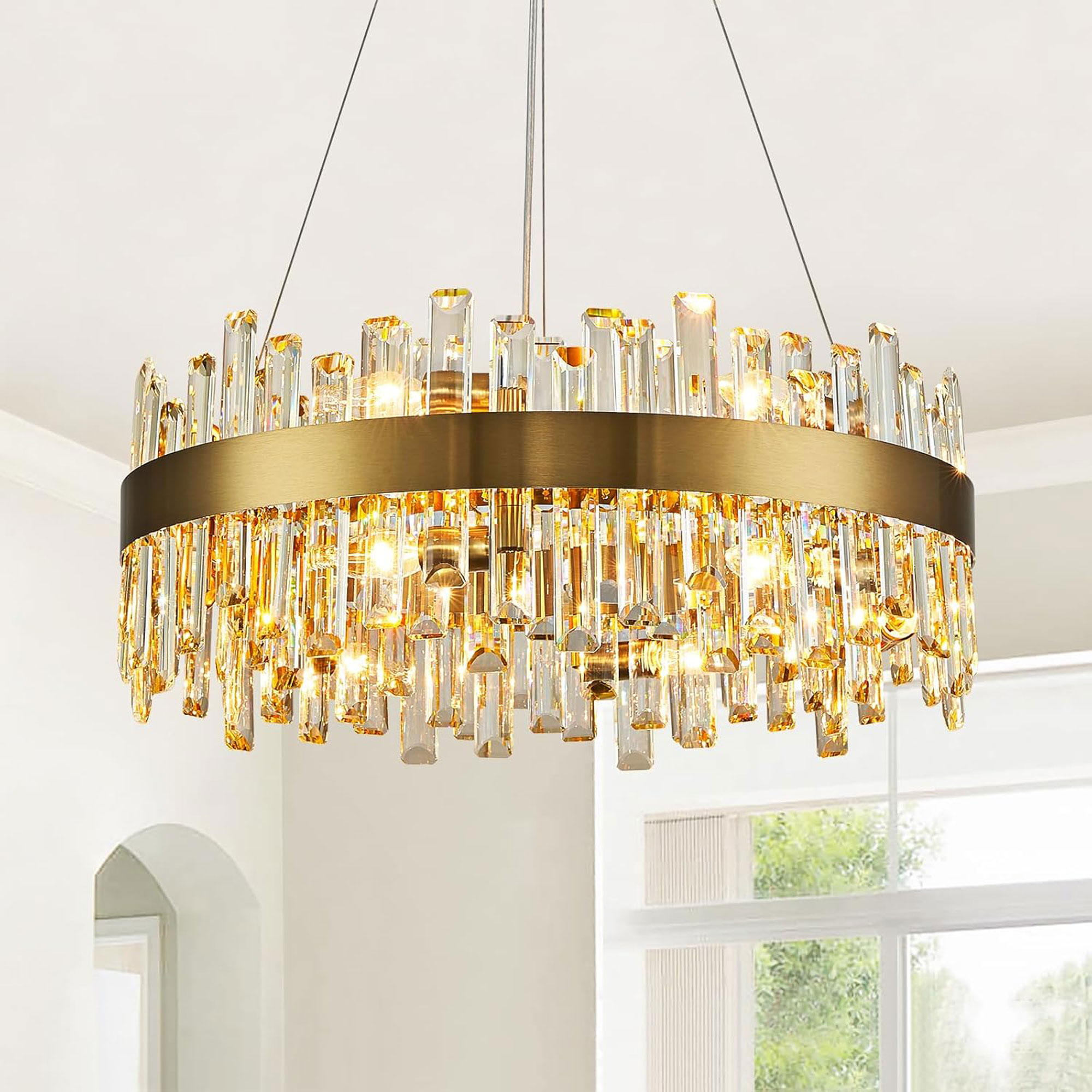
RRP: £222 | Keen to add a sense of luxury to your interiors? This brushed brass gold and crystal chandelier might have traditional undertones but its modern halo design has a distinctly contemporary look. The K9 crystal glass rods add a beautiful twinkly effect and you can select from three colour temperatures: warm, natural and cold depending on your needs.
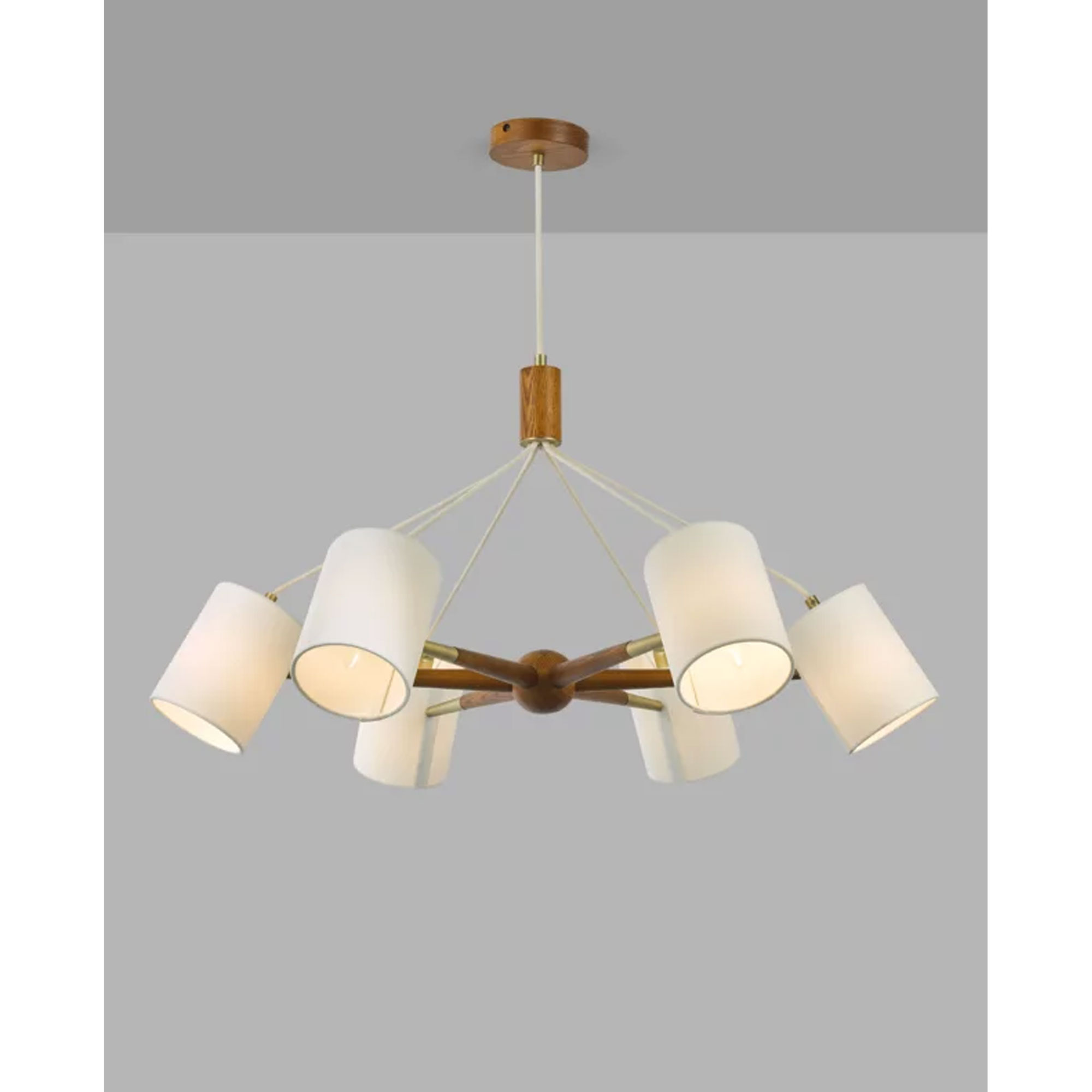
RRP: £300 | Chandeliers don't have to be traditional or fussy in their designs, and this model from John Lewis is proof of that. It combines the warmth of stained ash and antique brass with sleek and minimalistic linen shades and aesthetically pleasing natural fabric flex which tends to look better than wires. The design of this chandelier also offers a good spread of light.
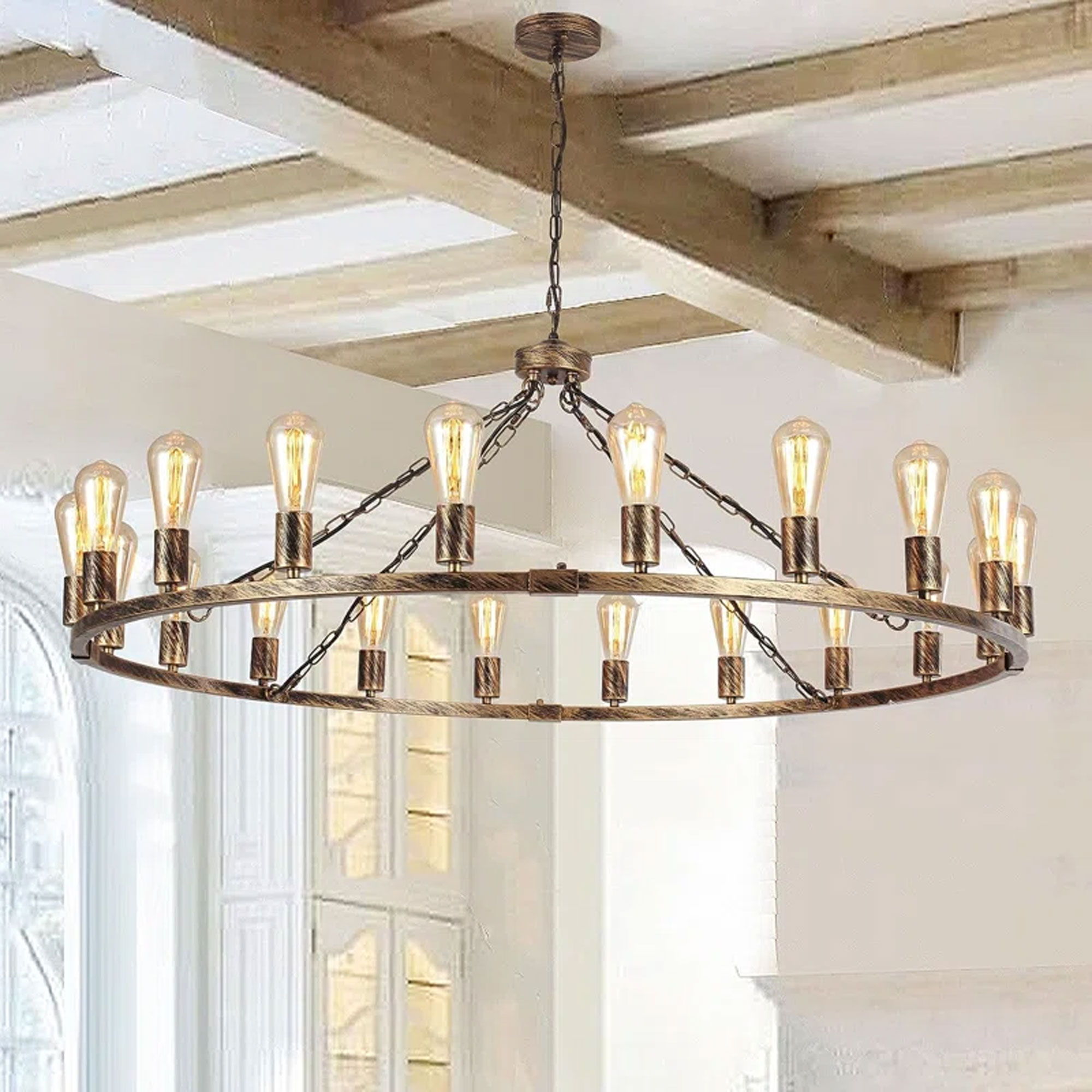
RRP: £186 | If you are after a bit of farmhouse rustic chic in your interior scheme then take a look at this offering from Wayfair. The traditional wagon wheel design has been given a nice modern update through the textured bronze finish. We also love the fact that it is compatible with dimmer switches meaning you can adjust the brightness to suit the time of day.
7. Light up dark corners with lamps
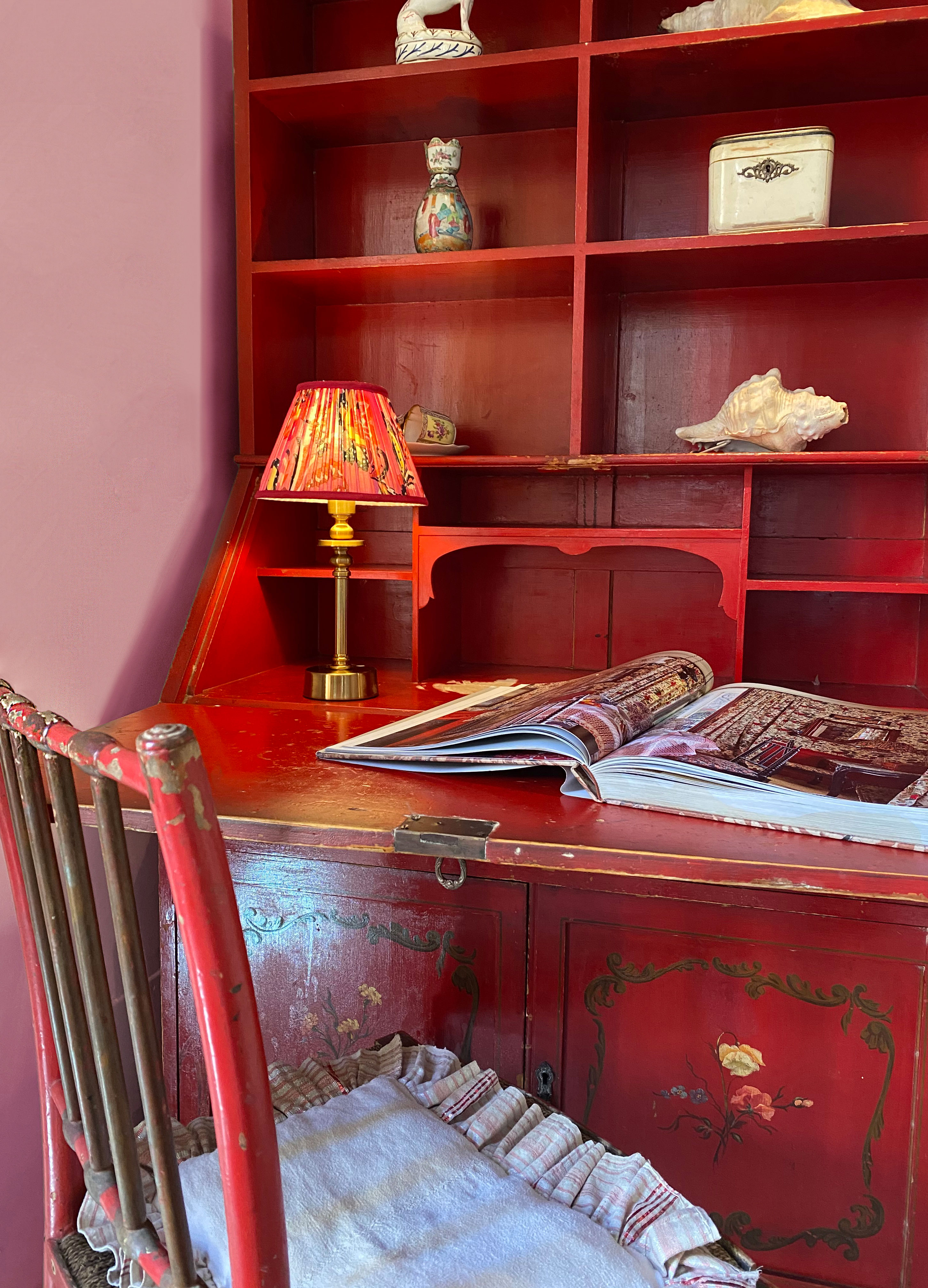
Side lamps are a great way to highlight certain areas of a space and bring a new depth to the room – plus they are never off the list of lighting trends thanks to the way they instantly cosy up a home.
“You should introduce varying levels of lighting to add some dimension to the space, table lamps and floor lamps are a great way to create an ambience when you don’t want to use the overhead lighting, bringing pockets of light into select spots in the room," suggests Marlena Kamenska.
"All of my rooms at home are filled with interesting lights," says interior designer Matthew Williamson. "I use them to create little pockets of warmth to give a sense of intrigue to every corner, whether the room has natural light or not. The combination of pattern, colour and lighting can bring sheer joy to any space.
"Choosing lamps should be like selecting accessories to complement an outfit," continues Matthew. "Setting the mood rests entirely on the lighting you choose. Forget about using one main lighting source in favour of illuminating a few lamps around the room for a more interesting, flattering lighting scheme."
"This way, you can be more flexible with what you intend to light. For example, a reading corner would benefit from an elegant swan-neck wall light, while a piece of art would look spectacular on the wall between two table lamps on a credenza or sideboard.”
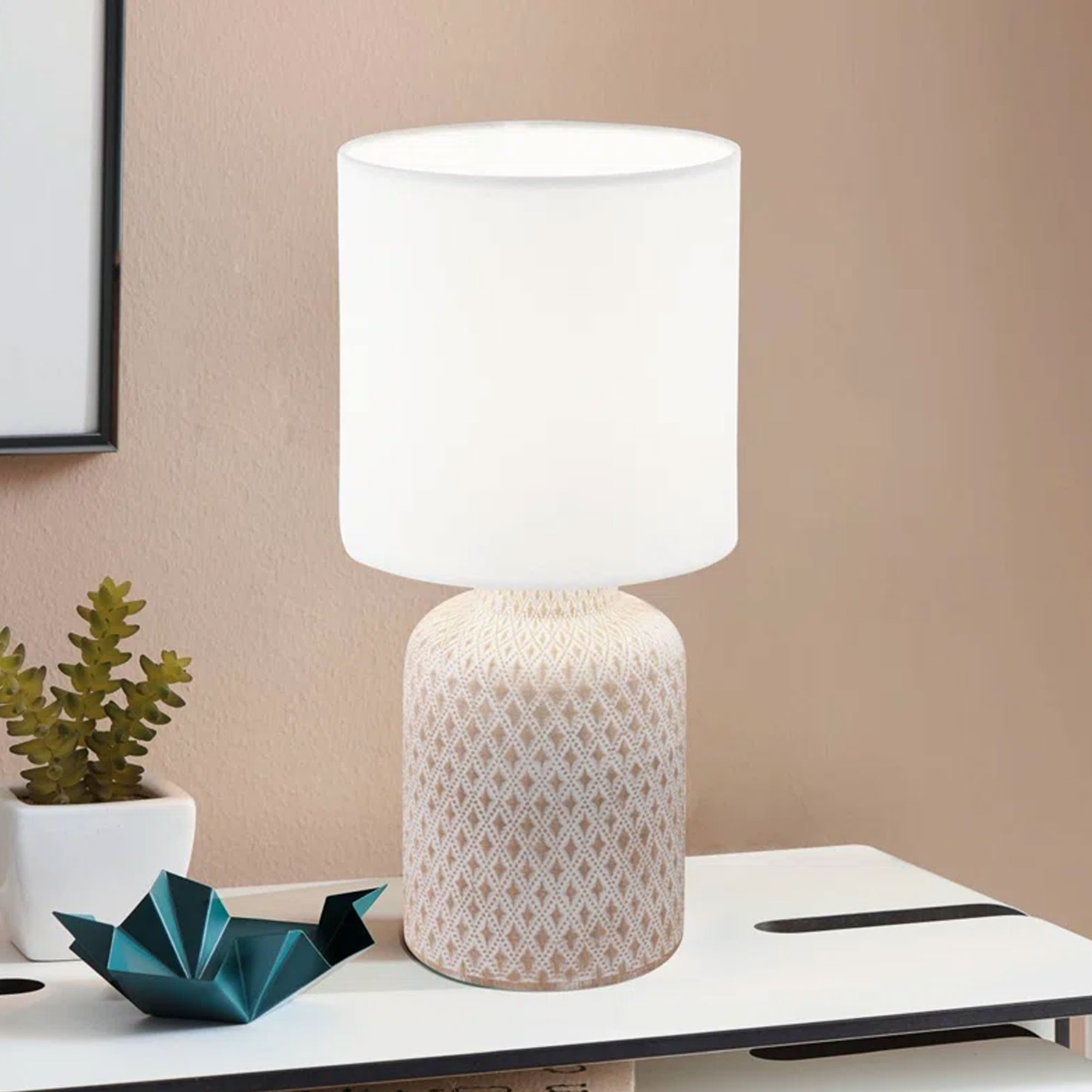
RRP: £23.62 | If you are on something of a tight budget but are still keen to inject a little expensive-looking style through your accessories, then this is a fantastic buy. It features a ceramic off-white chunky base detailed with a dainty pattern and its neutral-toned fabric shade would blend well into any kind of interior scheme, adding a classy, earthy touch.
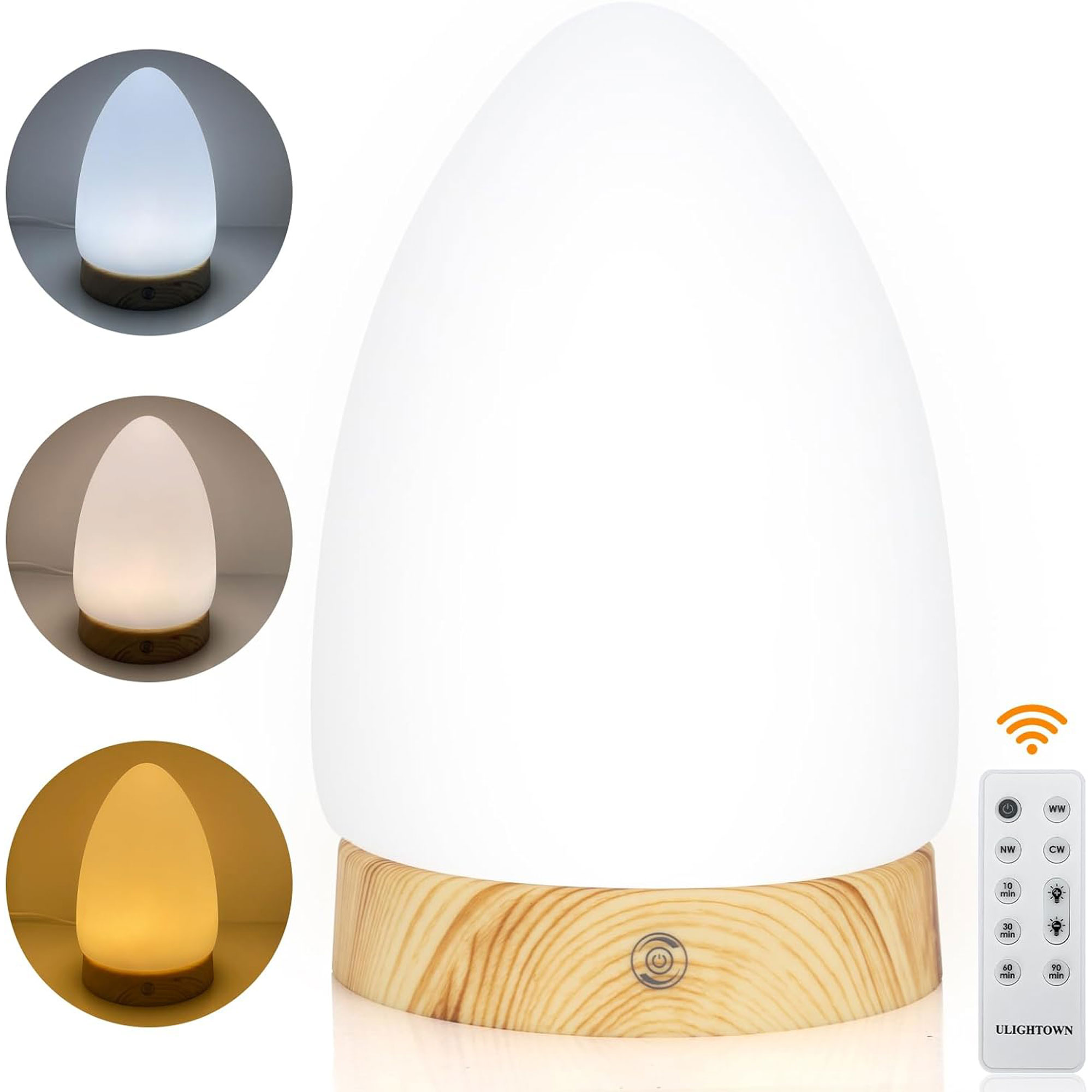
RRP: £36.99 | SAD lamps can improve mood and enhance focus and many people find them helpful once the days begin to shorten. This one delivers a strong bright white sunlight of 10,000 lux and offers three different light temperatures depending on your requirements. It also offers four levels of brightness and can be set on a timer.
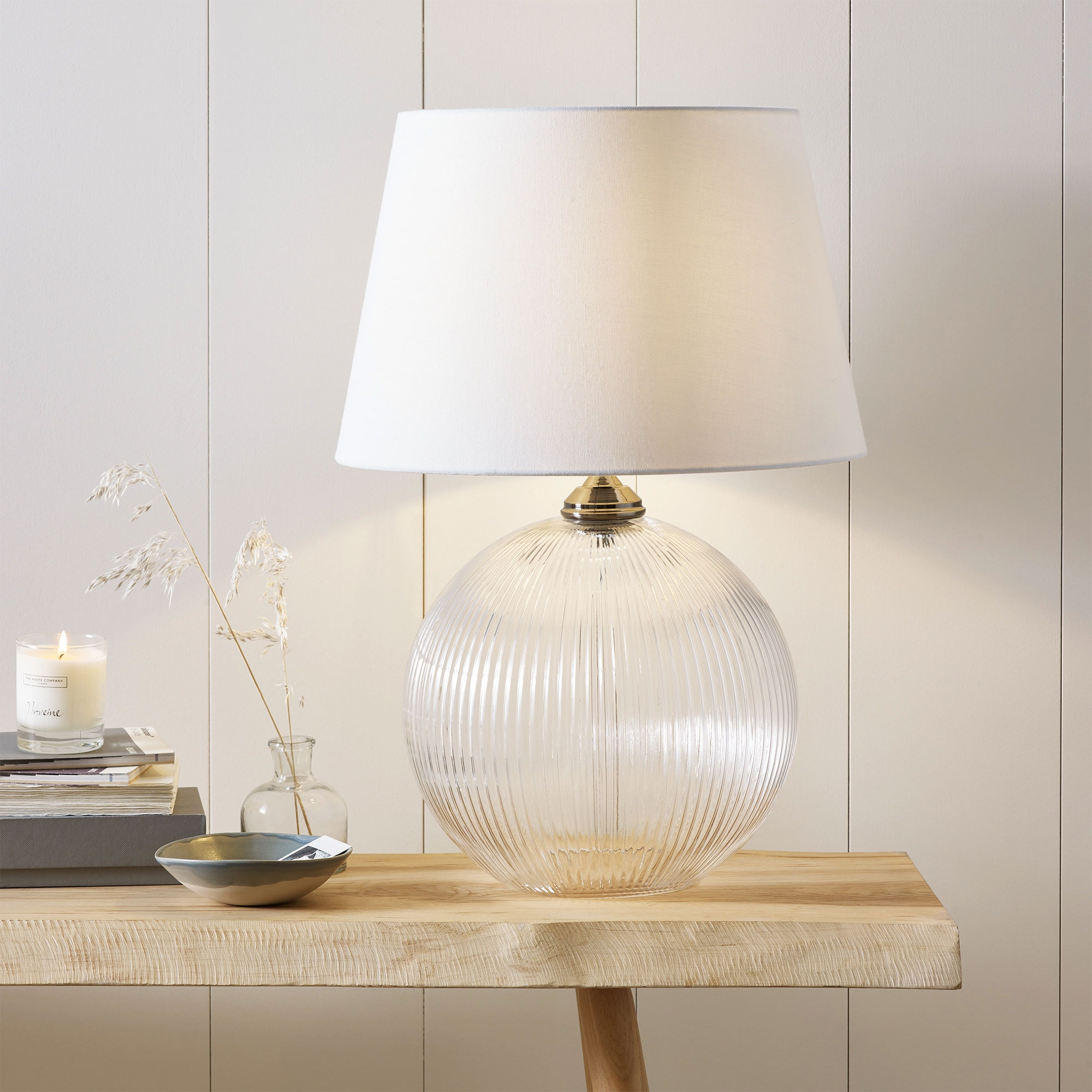
RRP: £120 | If you're after a classic side lamp that won't date any time soon then this is the model for you. With its stylish ribbed glass base and minimalistic shade, this lamp would look elegant in any kind of space, plus it kicks out a nice pure light. Even better, there is a matching ceiling light available for a coordinated look.
8. Install a skylight or roof lantern
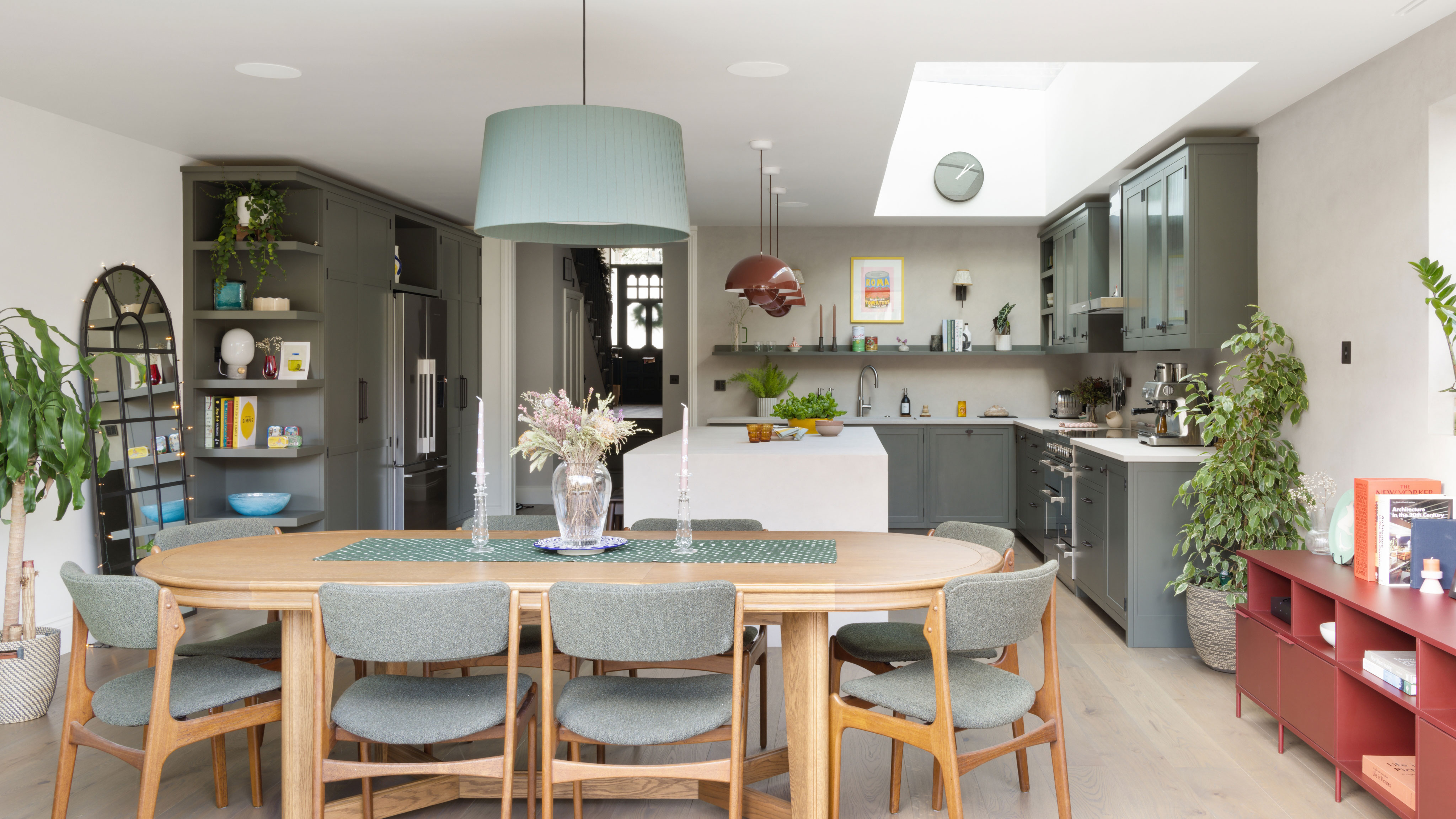
If you want your home to foster a sense of wellbeing and are looking at how to combat SAD (seasonal affective disorder) then finding ways to bring in more natural light should be a priority. Exposure to natural light is beneficial to health and wellbeing so trying to find ways to pull more into our homes makes sense.
Rooflights and roof lanterns are both great ways to bring light into rooms where standard windows might not be allowed because of planning restrictions. They are also a great idea if light is being blocked from your windows by some kind of obstruction, such as tall hedges or a wall.
The light that comes in from above is very different from the kind of light that comes in from standard windows. It is purer and brighter and, if you can, installing roof lights or a roof lantern will not only bring in more light but will also create a striking architectural feature - not to mention being a budget home improvement that adds value to your home.
The Sunlux 47cm x 73cm Top Hung Skylight from Amazon can be installed on roofs with pitches between 15 and 65 degrees.
FAQs
What colours brighten a dark room?
Just as it is useful to look into how to make a room look bigger with paint, so too should you look into the colours that brighten up a dark room.
It will probably come as little surprise to learn that pale shades are better than very dark colour schemes, but don't discount zingy, eye-popping hues as these too can have a brightening effect.
“Make sure your room has light-coloured walls, as light colours can help to bounce light around the room, creating a brighter ambience," explains Allan Reid. "Think about using colours that evoke feelings of brightness and openness, such as blues, greens and yellows.”
Borrowed Light by Farrow & Ball would be perfect in dark spaces.
How to get natural light into a room with no windows?
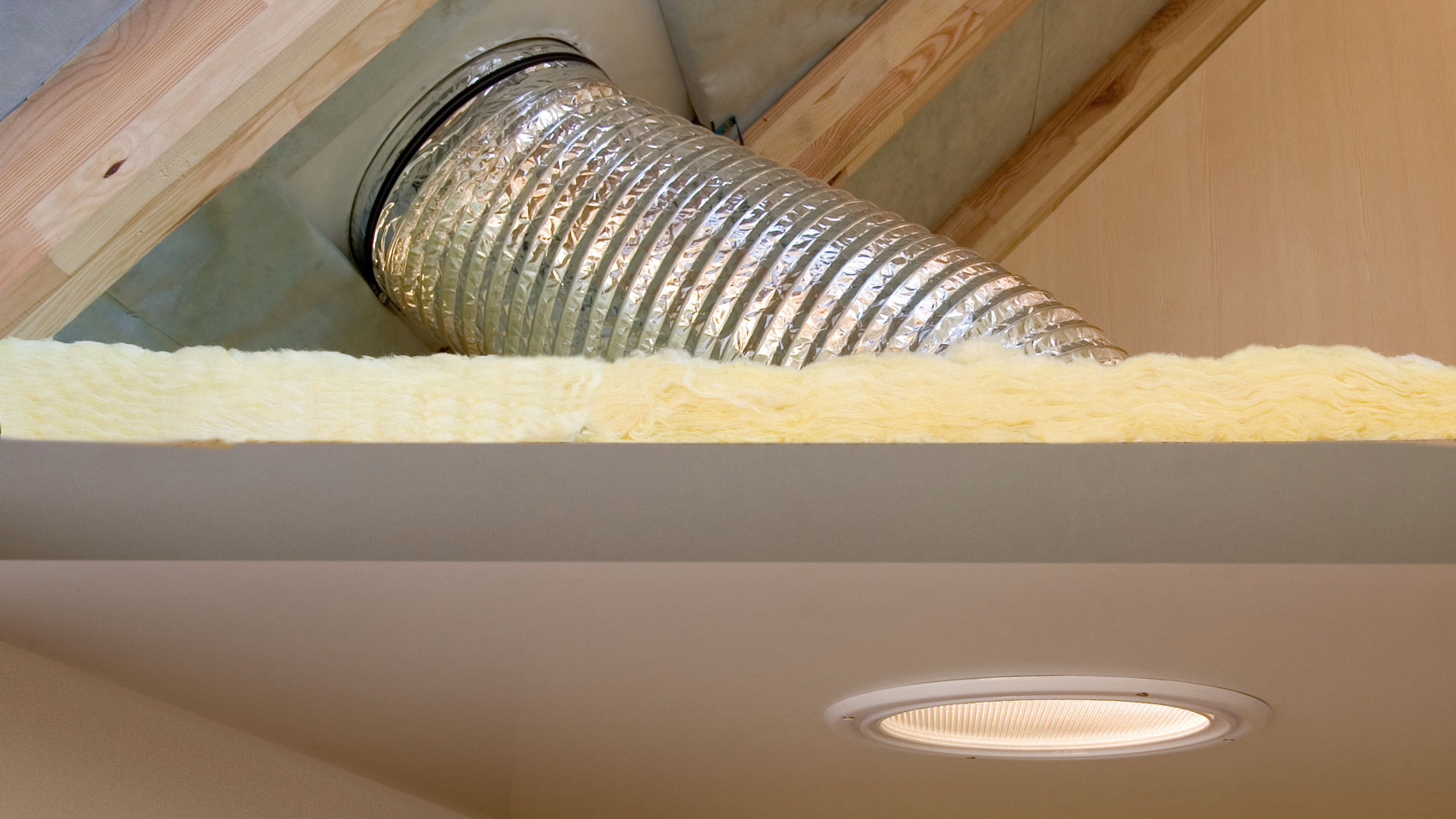
There are several great ways to get natural light into a windowless room and one of the cleverest is by using light tunnels.
"A source of natural light should be available in any living space," says Jessica Draper, marketing executive at Fakro. "Unfortunately, there are interiors in which the use of vertical or roof windows is not feasible. Rooms devoid of daylight are dark and uncomfortable. To ensure illumination in such places, installing a light tunnel will channel natural light to the centre."
"Light tunnels work by installing a glass panel and its integrated flashing to the roof of the building (looks a bit like a mini roof window)," continues Jessica. "The glass is usually domed but we also sell flat glass versions which look more discreet on the roof. The glass is then attached to a light-transmitting tube inside the building which can be flexible or rigid depending on what space it has to travel through."
"The shorter and straighter the tube, the better the light intensity in the room below. The tube then reaches the desired room and is installed into the roof to look like a light which is equipped with a built-in light diffusing element to try and intensify the light as much as possible. Essentially what happens is the sun’s light reflects and bounces down the tube allowing the room to be illuminated."
To get the most out of a light tunnel, the dome should ideally be placed on a south-facing section of the roof and the tube should be installed to take the shortest route from the roof to the ceiling of the room the tunnel will finish in.
Although this idea could work in any space, given the right professional advice, it is simplest when dealing with either single-storey ground-floor rooms or first-floor spaces, such as a gloomy landing or bathroom.
What to do if a room is too dark?
If, no matter how hard you try, your room is still too dark then it might just be time to embrace its lower light levels and get cosy.
If you are unsure how to make a home cosy, take a look at the layered lighting tips above and include lots of soft furnishings and accessories that scream to be snuggled into. Embrace bold, rich colours, such as burgundy and forest green or even decorate with brown, as well as powdery pinks, light some candles and relax.
While lots of natural light can definitely help with a sense of wellbeing in the home, don't neglect other methods of lifting your spirits through your interior scheme. Choosing happy paint colours for any room is also something to bear in mind when decorating.







